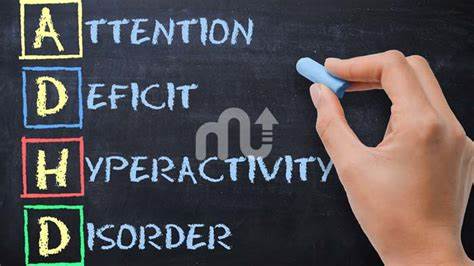Certainly! Attention Deficit Hyperactivity Disorder (ADHD) is a neurodevelopmental disorder that affects both children and adults. It’s characterized by persistent patterns of inattention, hyperactivity, and impulsivity that can significantly impact daily functioning and quality of life. Here’s an in-depth overview of ADHD:
- Types of ADHD:
- Predominantly Inattentive Presentation: Individuals with this type struggle with sustaining attention, organization, and follow-through. They may appear forgetful and easily distracted.
- Predominantly Hyperactive-Impulsive Presentation: This type is characterized by hyperactivity and impulsive behavior without significant inattention.
- Combined Presentation: This is the most common type, where individuals exhibit both inattentive and hyperactive-impulsive symptoms.
- Symptoms:
- Inattention symptoms: Poor attention to details, difficulty sustaining attention in tasks, forgetfulness, and being easily distracted.
- Hyperactivity symptoms: Fidgeting, restlessness, excessive talking, and difficulty engaging in quiet activities.
- Impulsivity symptoms: Impulsive decision-making, difficulty waiting for one’s turn, and interrupting others.
- Diagnosis:
- ADHD is diagnosed based on specific criteria outlined in the Diagnostic and Statistical Manual of Mental Disorders (DSM-5). A comprehensive evaluation is typically conducted by healthcare professionals, including interviews, observation, and standardized rating scales.
- Causes:
- The exact cause of ADHD is not fully understood, but a combination of genetic, neurological, environmental, and prenatal factors is believed to contribute.
- Brain imaging studies have shown differences in the structure and function of the brains of individuals with ADHD, particularly in areas related to attention and impulse control.
- Coexisting Conditions:
- ADHD often coexists with other conditions such as learning disabilities, anxiety, depression, and behavioral disorders.
- Managing ADHD may involve addressing these coexisting conditions to provide comprehensive care.
- Treatment Options:
- Medication: Stimulant medications like methylphenidate and amphetamine salts are commonly prescribed to manage symptoms.
- Behavioral Therapy: Cognitive-behavioral therapy and behavior modification strategies can be effective in improving coping skills and reducing disruptive behaviors.
- Educational Support: Individuals with ADHD may benefit from educational interventions tailored to their specific needs, such as individualized education plans (IEPs) or 504 plans.
- Lifespan Impact:
- ADHD can persist into adulthood, and its impact can extend across various life domains, including academic, occupational, and social functioning.
- With proper management and support, individuals with ADHD can lead fulfilling and successful lives.
- Stigma and Awareness:
- ADHD is sometimes misunderstood or stigmatized, leading to challenges in obtaining appropriate support and accommodations.
- Raising awareness about ADHD and dispelling myths is crucial for fostering understanding and empathy.
In conclusion, ADHD is a complex and multifaceted neurodevelopmental disorder that requires a comprehensive approach for assessment, diagnosis, and management. Understanding the nuances of ADHD can contribute to more effective interventions and improved outcomes for individuals affected by this condition.

